Medial Collateral Ligament (MCL) is placed on the medial (inner) side of the knee, connecting the medial femoral condyle and the medial tibial condyle. The MCL passes along the medial side of the knee. It is one of the major knee ligaments that help to stabilize the knee joint. It is a flat band of tough fibrous connective tissue composed of long, stringy collagen molecules that resist valgus force, which occurs if outwards force in the tibia/foot with the knee.
An injury to the MCL has commonly known as an MCL sprain. Ligament injuries can either stretch or tear. MCL injury of the knee is by a direct blow, such as a blow to the knee’s outer aspect that stretches or tears the MCL. Contracting the muscle while running and turning can also put enough stress on the ligament to sprain or tear it but may develop gradually. This injury is frequent in contact sports.
Damage to the medial collateral ligament in the knee can lead to medial knee pain, swelling, and a loss of stability in the knee. Treatment for MCL sprain is with ice, knee brace, and physical therapy. Surgery may be necessary for rare situations.
MCL Tear Causes
MCL injuries are common in contact sports such as football, rugby, and martial arts but can occur in daily living activities. The sprain results from falls that include a sharp change in direction, twisting, or (valgus) force on the ligament whilst the foot is fixed on the ground, and then it overstretches the ligament. Weakness or incoordination of the muscles predisposes you to a ligament sprain or tear.
Repetitive sideways forces (valgus forces) on the knee can gradually over time lead to an MCL sprain. For instance, when you kick a football with the inside of the foot or from kicking in martial arts, which may gradually lead to an MCL injury.
MCL Tear/Sprain Symptoms
The symptoms of an MCL sprain depend on the degree of stretching or tearing the knee ligament you got. You may notice an audible snap or tearing sound at the time of your ligament injury.
MCL Tear Grades
For MCL sprain, it grades 1, 2, or 3 depending on the injury’s symptoms/severity. Grade 1 injury is a mild sprain, Grade 2 is moderate and Grade 3 is a complete tear of the ligament.
MCL Sprain Grade 1 Symptoms
For the Grade 1 MCL sprain, the knee ligament is slightly stretchy, but they don’t actually tear. Although the knee joint may not hurt or swell very much, a mild medial collateral ligament sprain can increase the risk of a repeat injury.
- For a Grade 1 MCL injury, mild tenderness on the inside of the knee but generally no swelling.
- The patient is likely to walk or even run with minimal symptoms but not at 100% and they will probably experience discomfort.
- When the knee assesses by using stress tests such as the valgus stress test, the ligament will feel stable with a hard end feel (no laxity) and minimal movement but having some degree of pain along the ligament.
MCL Sprain Grade 2 Symptoms
With the moderate Grade II MCL tear, ligament tears partially. Knee swelling and bruising are common, and the use of the knee joint is usually painful and difficult. You may have some complaints of instability or a feeling of the knee giving way.
- It usually associates Grade 2 injuries with significant tenderness and pain on the inside of your knee.
- You will probably have some swelling.
- The valgus stress test will usually reproduce MCL sprain symptoms, and you may have some laxity in your knee. However, there will be a specific endpoint as the ligament not completely ruptures.
MCL Sprain Grade 3 Symptoms
With a Grade III MCL sprain, the ligament tears fully, symptoms inducing swelling and sometimes bleeding under the skin. As a result, the joint is unstable and can be tough to bear weight. You may feel the knee giving way. Usually, there will be no pain or severe pain that diminishes quickly following a grade 3 tear as all the fibers completely tear at the time of injury.
- Grade 3 injuries involve a complete or near-complete tear of the ligament.
- Pain levels can occasionally vary and it may feel less painful than a Grade 2 MCL sprain. The reason for this is that the nerves supplying pain signals also rupture.
- You will have significant swelling and may feel that you have a wobbly or unstable knee.
- Physical examination, such as the valgus stress test will exhibit laxity in the joint movement. The test might not have a definite endpoint when the medial ligament is stressed as there is no ligament halting the movement.
A grade 3 MCL injury usually takes place with other injuries in the knee at the same time.
With severe tears, other structures in the knee joint are at risk of injury including the meniscus, LCL, and/or ACL. A torn MCL can upset the stability of the knee. A person may experience as if their knee might give way or that their kneecap feels loose. It is viable to injure other ligaments at the same moment as the MCL. If a blow is extreme to the knee, it will lead to damage:
- The outside lateral collateral ligament (LCL) of the knee
- The anterior cruciate ligament (ACL), hooks up bones in the femur and lower leg (Tibia) at the front of the knee.
MCL Tear Diagnosis
A doctor or physical therapist will usually ask about the activity that leads to the injury. For instance, a collision with another player throughout a contact sport will cause injury. They’re likely to ask about any symptoms. A doctor might compare one knee with the opposite, look closely at the harmed knee, and gently feel for any swelling and therefore the location of the tenderness.
On examination, your doctor will usually tell if you have an MCL injury by examining your knee. Throughout the examination, your doctor can bend your knee and put pressure on the outside. They’ll be able to tell if your inner knee is loose, which might indicate an MCL injury. There’ll be tenderness along with the ligament, possible swelling, and pain with stress tests.
Valgus Stress for MCL Tear Test
The valgus stress test could be a diagnostic test that is used in cases of suspected MCL injuries. The doctor or a physical therapist takes hold of the leg, ensuring the knee is slightly bent (approx 30 degrees). They stabilize the thigh while applying outward pressure on the lower leg (tibia) and this stretches the medial ligament.
Pain on the inside of the knee and or laxity in the joint (excessive movement) with an altered end feel within the ligament indicates a positive test. How much movement/stability there’s will then determine the severity or grades of injury you got.
Your doctor might order imaging tests to help diagnose your knee injury. An X-ray can offer your doctor a picture of the bones in your knee. This may facilitate them to rule out different knee issues.
During an X-ray, a technician can position your knee so that the machine will record images. This could cause some pain if your knee is tender or swollen. However, the method can only take a couple of minutes. The X-ray will tell your doctor if there’s an injury to the bones in your knee.
MRI used to diagnose a knee ligament injury and look at other encompassing structures for combination injuries.
Treatment for Sprained MCL
A tear to the medial collateral ligament (MCL) within the knee will cause pain, swelling, and a lack of stability within the knee. Treatment is typical with ice, a knee brace, and physiotherapy. Surgery is also necessary in rare cases.
First Aid for MCL Sprain
Immediate first aid is price principles (Rest, Ice, Compression, and Elevation) that will apply as shortly as possible. Apply ice or cold therapy wrap as soon as doable for 10 to 15 minutes and repeat every hour, shortening the frequency as symptoms diminish. Ice won’t directly apply to the skin however use a wet towel or similar. Cold therapy knee wraps are on the market to use and can apply compression.
Rest from training, any activities or movements that induce pain. Remaining to train or do any activity that leads to pain will prevent healing and prolong recovery.
Other Approaches for MCL Sprain
Wear a compression bandage/sleeve or knee support to assist cut back any swelling and protect the joint. Protect the MCL while it’s healing to prevent additional injury and speed up recovery time. A knee brace will facilitate to prevent any sideways movement of the knee joint and shield the MCL from strain and pressure. A hinged knee brace is best significantly for Grade 2 and 3 injuries. A hinged brace is robust knee support that has solid metal support down the sides to stop the sideways movement of the joint. You will get excellent support with using medial unloader knee braces in this condition.
People should avoid contact sports and movement that puts an excessive amount of strain on the MCL until the injury heals completely. This can facilitate to prevention of further injury.
More severe Grade 2 and full Grade 3 injuries might need a limited motion hinged knee brace that additionally restricts the amount of movement or knee bend within the joint. If an MCL tear is severe, a doctor might suggest that individuals use crutches to avoid putting weight on the knee joint. Physical therapy will facilitate a person to regain normal movement within the knee. Doing light exercises suggested by a physical therapist may help to strengthen the muscles around the knee which can support healing.
As you get over your injury, the goal is to regain strength in your knee and stop further injury. Treatments might include: when pain allows a full rehabilitation program of mobility, strengthening and eventually start functional exercises to come back to full fitness and prevent the injury returning.
Recommended Post
- UFlex Athletics Knee Compression Sleeve Reviews
- Top Rated Mueller Knee Brace for Knee Support
- Top-Rated DONJOY ACL Knee Braces
- Best Unloader Knee Brace for Osteoarthritis
Rehab Exercises for Sprained MCL
Physical therapy can strengthen the muscles around the knee and can improve the knee’s range of motion. You will wear a protecting knee brace throughout physical activity. Limiting activities that may cause further injury, like contact sports.
Exercises for MCL Tear
A physical therapist can advise strengthening exercises to help recovery after an MCL tear. Some exercises could include:
Knee Flexion with Heel Slide

For this exercise, you’ll lie on your back together with your knees bent. Slide your heel back by bending your affected knee as far as you can. Then hook your other foot around your ankle to assist pull your heel even farther back. Hold for about 5 seconds and then rest for up to 10 seconds. Repeat 6 to 10 times.
Quad Sets
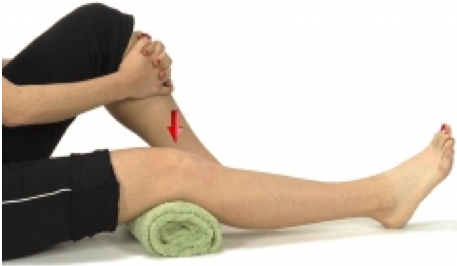
Sit together with your affected leg straight and supported on the ground or on a firm bed. Place a rolled towel beneath the knee. Your other leg will bend and also your foot flat on the ground. Then you tighten the affected thigh muscles by pressing the back of your knee down into the towel. Hold for about 5 seconds and then rest for up to 10 seconds. Repeat it 6 to 10 times.
Hip Adduction
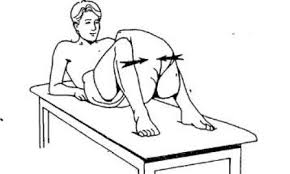
Sit on the ground together with your knees bent and place a pillow between your knees. place your hands slightly behind your hips for support. Squeeze the pillow by tightening the muscles on the inside of your thighs. Hold it for 5 seconds, then rest for 10 seconds. Repeat 6 to 10 times.
Hip Abduction

Sit on the ground with your affected knee near to a wall with bending your affected knee and another leg straight in front of you. Place a rolled towel pillow between the outside of your knee and therefore the wall. Place your hands slightly behind your hips for support. Push the outside of your knee against the pillow and therefore the wall. Hold for 5 seconds and then rest for up to 10 seconds. Repeat 6 to 10 times.
Straight-Leg Rises (SLR)
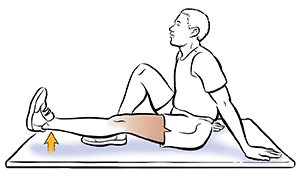
Sit on the ground with your good knee bent and foot flat on the ground. Your affected leg ought to be straight. Tighten your affected leg thigh muscles and your leg straight; elevate your affected leg so that your heel is about 25 centimeters off the ground. Hold for about 5 seconds and then slow down on the ground. Relax for up to 10 seconds between repetitions. Repeat it for 6 to 10 times.
Hamstring Curl
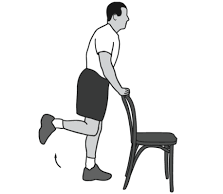
Stand up straight, engaging the abdomen muscles. Then stand on one leg and slowly bend the opposite knee by bringing the heel up toward the buttocks. You’ll hold for 30 seconds before repeating on the other side of the body. You’ll hold on to a chair or table for support if required.
Wall Slide
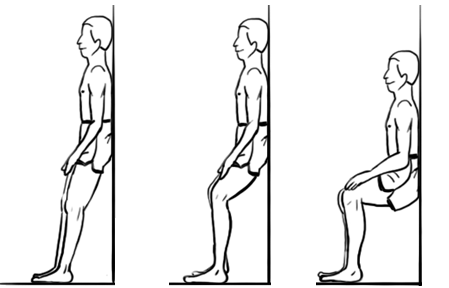
Standing up straight, with both feet flat on the floor, place the back firmly against a wall. Then you slowly slide down, keeping the back against the wall until reaching a squatting position. And hold for 30 seconds. Repeat it 10 to 15 times.
MCL Tear Surgery Grade III
Most of the time for Grade 3 MCL tear needs no surgery. If there is further damage to the joint, for example, an ACL or meniscus tear and surgery might be considering. If the location of an MCL tear implies that it’s unlikely to heal, or if an individual has torn over one ligament, a surgeon might suggest surgery. Surgery involves reconnecting the ends of the ligament or reattaching it to the bone if needed.
However, it’s thought there’s no advantage even with only grade 3 MCL injuries to treating them surgically as opposed to bracing and rehabilitation exercises.
Post-Surgical Rehabilitation for Grade III MCL Sprain
Post-operative knee rehabilitation is one of the most necessary aspects of knee surgery. The foremost successful and fastest outcomes result from the guidance and supervision of an experienced sports physical therapist.
Your physical therapy rehabilitation following knee surgery focuses on restoring full knee motion, strength, power and endurance. You may also need balance, proprioception, and agility training that is individualized toward your specific sporting or functional needs.
MCL Sprain Recovery Time
The outlook is typically good. Recovery times vary betting on the severity of your MCL injury.
Grade I MCL Sprain Recovery Time
Grade I sprain typically heal within a few weeks. Resting from painful activity, icing the injury, and a few anti-inflammatory medications are helpful. Physical therapy can facilitate to hasten the healing process via massage, strengthening, joint exercises and electrical modalities to guide the direction that the ligament fiber’s healing.
Grade II MCL Sprain Recovery Time
If Grade II sprain happens, the employment of a weight-bearing brace or some supportive tape is common in early treatment. This helps to ease the pain and avoid stretching the healing ligament. This could take up to 6 weeks. Physical therapy helps to hasten the healing process via massage, strengthening, joint exercises and electrical modalities to guide the direction that the ligament fibers heal.
Grade III MCL Sprain Recovery Time
When a Grade III injury happens, you always wear a hinged knee brace, locked into extension, and use crutches for 1-2 weeks to safeguard the injury from weight-bearing stresses. As pain resolves the brace is often unlocked to permit movement as tolerated. These injuries are most with success treated via physical therapy and will not come back to their full level of activity for 3 to 4 months. It ought to rehabilitate Grade III under the guidance of your physical therapist and knee specialist.
Preventing the Recurrence of MCL Injuries
A knee strengthening, agility and proprioceptive training program are that the best way to scale back your probability of a knee ligament sprain. Premature comes back to high-risk activities like sport is best discussed along with your physical therapist or surgeon.
